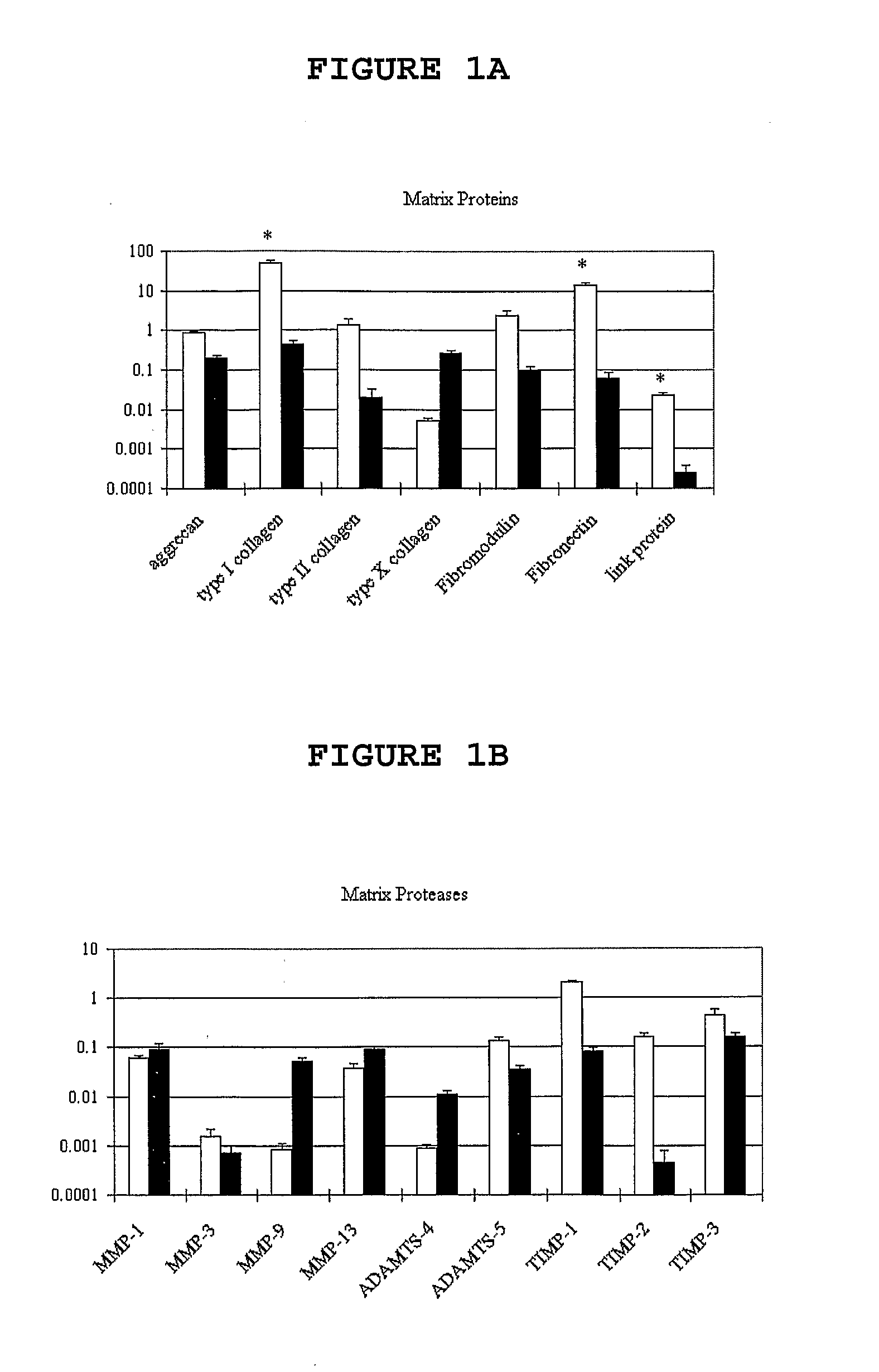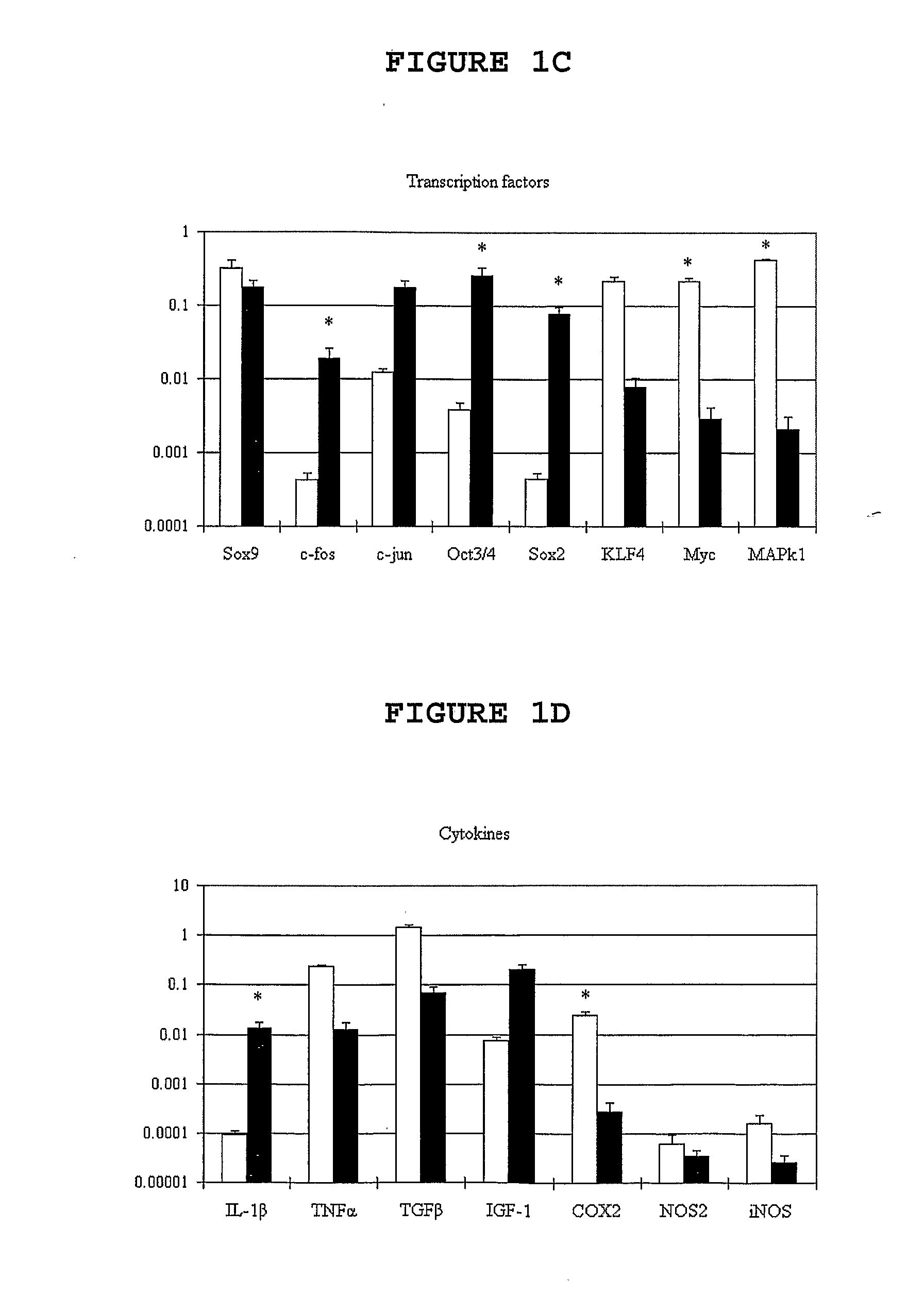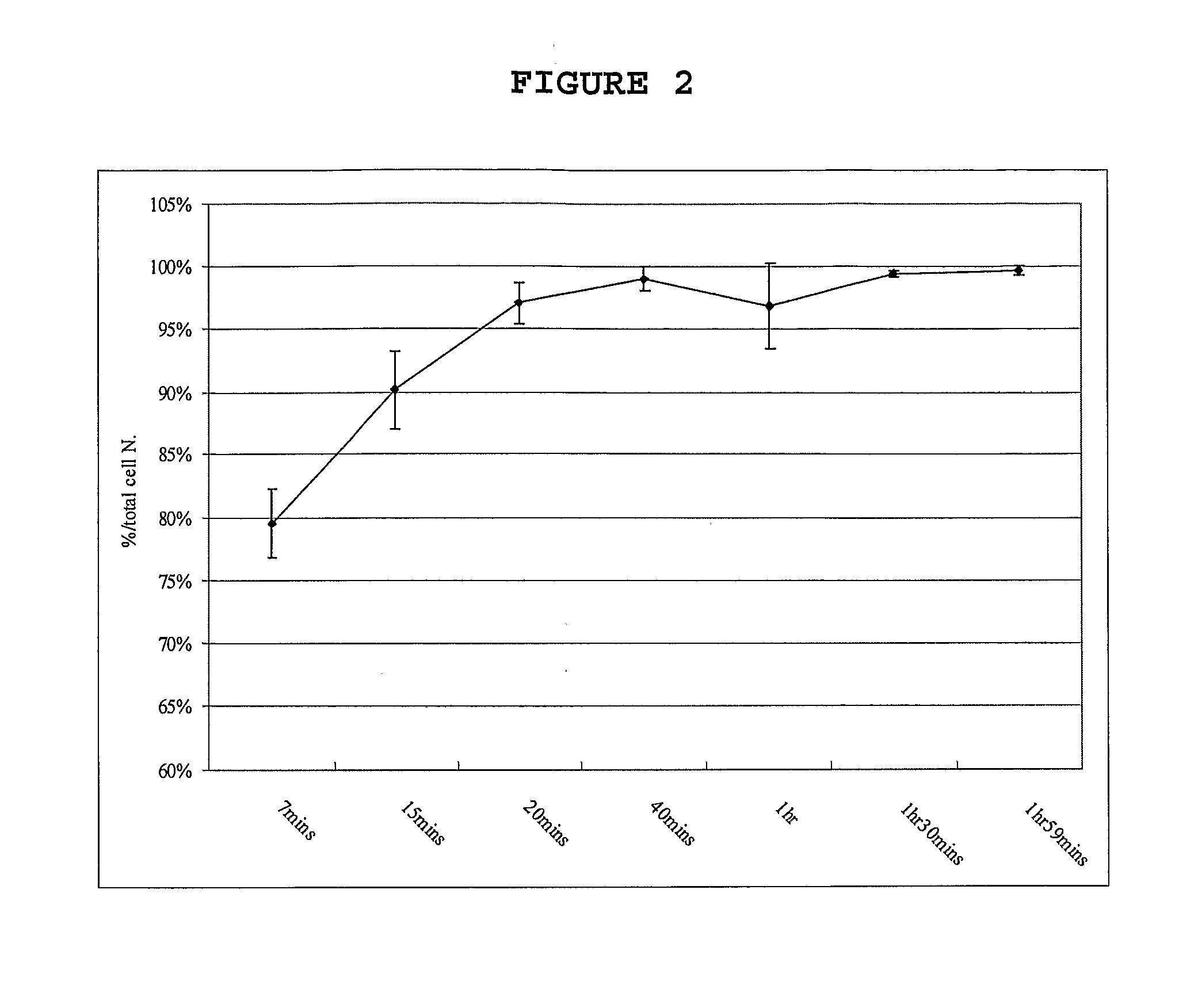Method of tissue repair
a tissue and tissue technology, applied in the field of tissue repair, can solve the problems of significant disease and morbidity, decrease the ability of cells to proliferate and repair tissue in vivo, and increase the risk of cells becoming contaminated with the length of time cells are cultured, so as to reduce the cell death of primary cells and increase the viability of cells for implantation
- Summary
- Abstract
- Description
- Claims
- Application Information
AI Technical Summary
Benefits of technology
Problems solved by technology
Method used
Image
Examples
example 1
Treatment of Cartilage Defect Using Autologous Cells with Implantable Support
[0069]A 100 g cartilage chip was excised from the non-weight bearing area of joint and placed into serum-free nutrient media. Each biopsy containing about 100 to 200 thousand cells, was expanded in vitro to approximately 10 million cells by the method described in the patent (PCT / AU2007 / 000362 entitled “Tenocyte Culture Method” ascribed to Zheng, herein incorporated in its entirety by reference). After acceptable cell density was achieved cells were reconstituted into patients' own serum in a sealed glass vessel and transported to a site for implantation. At the arrival in the operating theatre, cells are re-heated to 37° C. and injected onto the surface of a scaffold using a 23 gauge needle. A typical scaffold used was as described supra consisting of a collagen with / without polylysine coating. After the injection of cells onto the scaffold, the cells were spread onto the scaffold and allowed to incubate f...
PUM
| Property | Measurement | Unit |
|---|---|---|
| weight | aaaaa | aaaaa |
| composition | aaaaa | aaaaa |
| mechanical strength | aaaaa | aaaaa |
Abstract
Description
Claims
Application Information
 Login to View More
Login to View More - R&D
- Intellectual Property
- Life Sciences
- Materials
- Tech Scout
- Unparalleled Data Quality
- Higher Quality Content
- 60% Fewer Hallucinations
Browse by: Latest US Patents, China's latest patents, Technical Efficacy Thesaurus, Application Domain, Technology Topic, Popular Technical Reports.
© 2025 PatSnap. All rights reserved.Legal|Privacy policy|Modern Slavery Act Transparency Statement|Sitemap|About US| Contact US: help@patsnap.com



